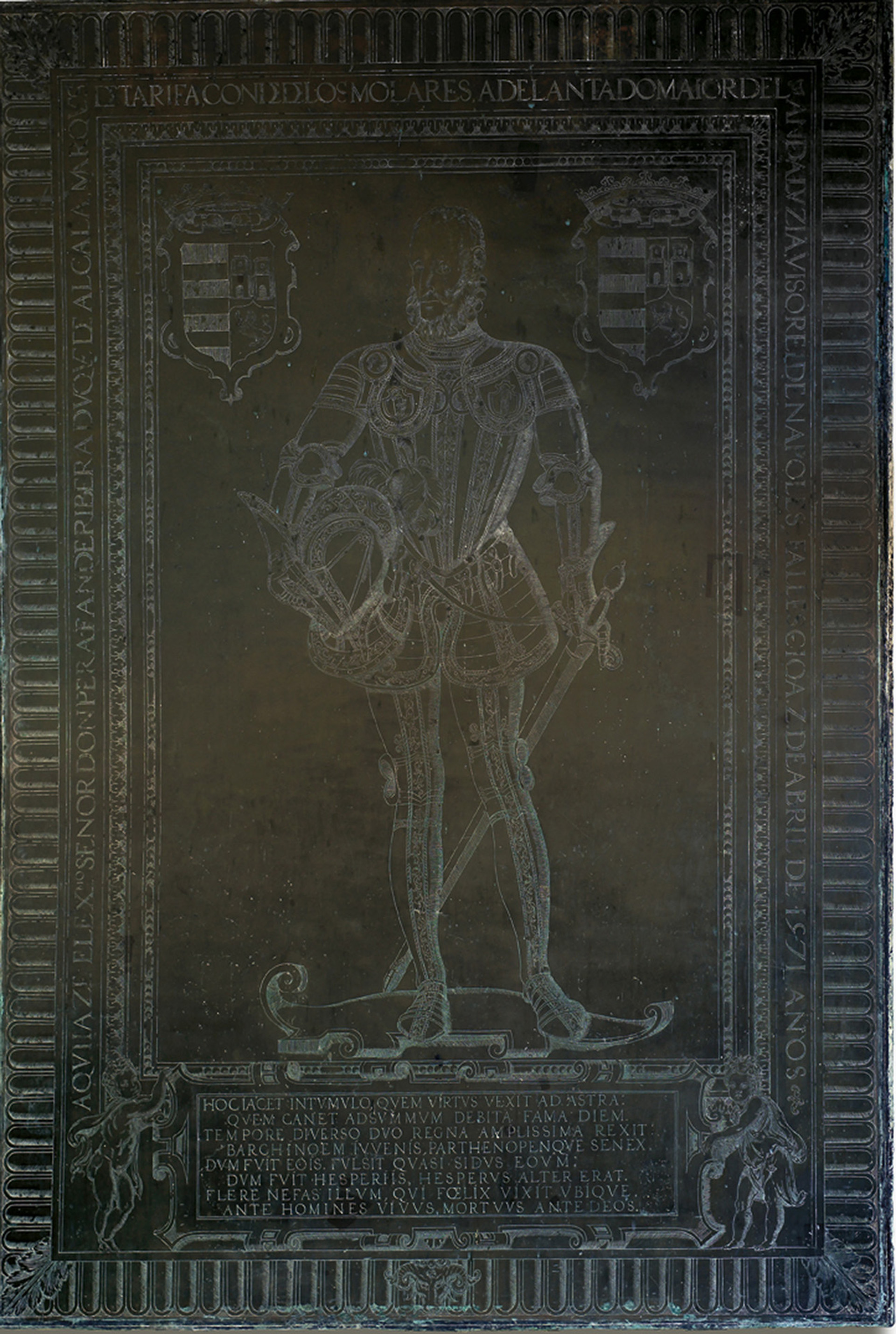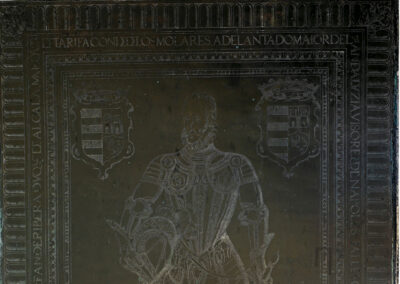In his will dictated in Naples, Per Afán III Enríquez de Ribera ordered that, if he died in Seville, he should be buried, under a bronze cover, in the chapel of the Cartuja de las Cuevas, where, since 1420, all his ancestors had been buried, the year of burial, when the chapel had just been completed, of the first major adelantado of Andalusia, under whose patronage it was built, thus acquiring, for his lineage, the right of burial and patronage.
The will contradicts a report by De Dominici in the 18th century of a high-quality marble tomb that Annibale Caccavello had carved for the viceroy, a sepulchral monument that would be in keeping with the tombs that his uncle Fadrique Enriquez de Ribera had commissioned in Genoa for his parents and ancestors.
Although his death did not occur in Naples, his younger brother, Fernando Enríquez de Ribera, wished to fulfil his brother's wishes by signing a contract in December 1573 with the sculptor Juan Bautista Vázquez the Elder and the draughtsman Bartolomé Morel, whereby, for the price of 1,000 ducats, both undertook to deliver a bronze panel within six months according to a design already drawn and handed over to him at the same time. The high price reflects both the prestige of the authors, the perfection of execution required in the contract and the material demanded".very good bronze of what is cast in artillery".. In terms of design, María José Redondo Cantera considers that "... the design of the project is a very important one.the representation of Don Perafan does not follow any of the models used in Spain for this type of sepulchral monument."It must therefore have come from Italy and perhaps belonged to Annibale Caccavello, with whom, according to De Dominici's report, the viceroy must have been preparing his burial. The same author points out that the "The sculptor did not work on this shrine as such, but as a draughtsman and engraver, an activity which he also carried out as a".
As in the primitive Germanic enthronements, the Duke of Alcalá is depicted standing on his shield, dressed in richly decorated armour, holding his helmet in his left hand and his sword in his right, between two shields bearing the arms of Ribera and Enríquez. An inscription "to the roundThe Spanish "lauda", which identifies the deceased, and Latin verses in a cartouche under a ducal crown, complete the lauda. The contract stated that the Latin verses, classical elegiac distichs, were delivered with the tracery, so it is quite possible that they also come from the refined and cultivated world of the Neapolitan court, where the duke distinguished himself by his promotion of the arts and letters and, in particular, by his collecting of antiquities.


